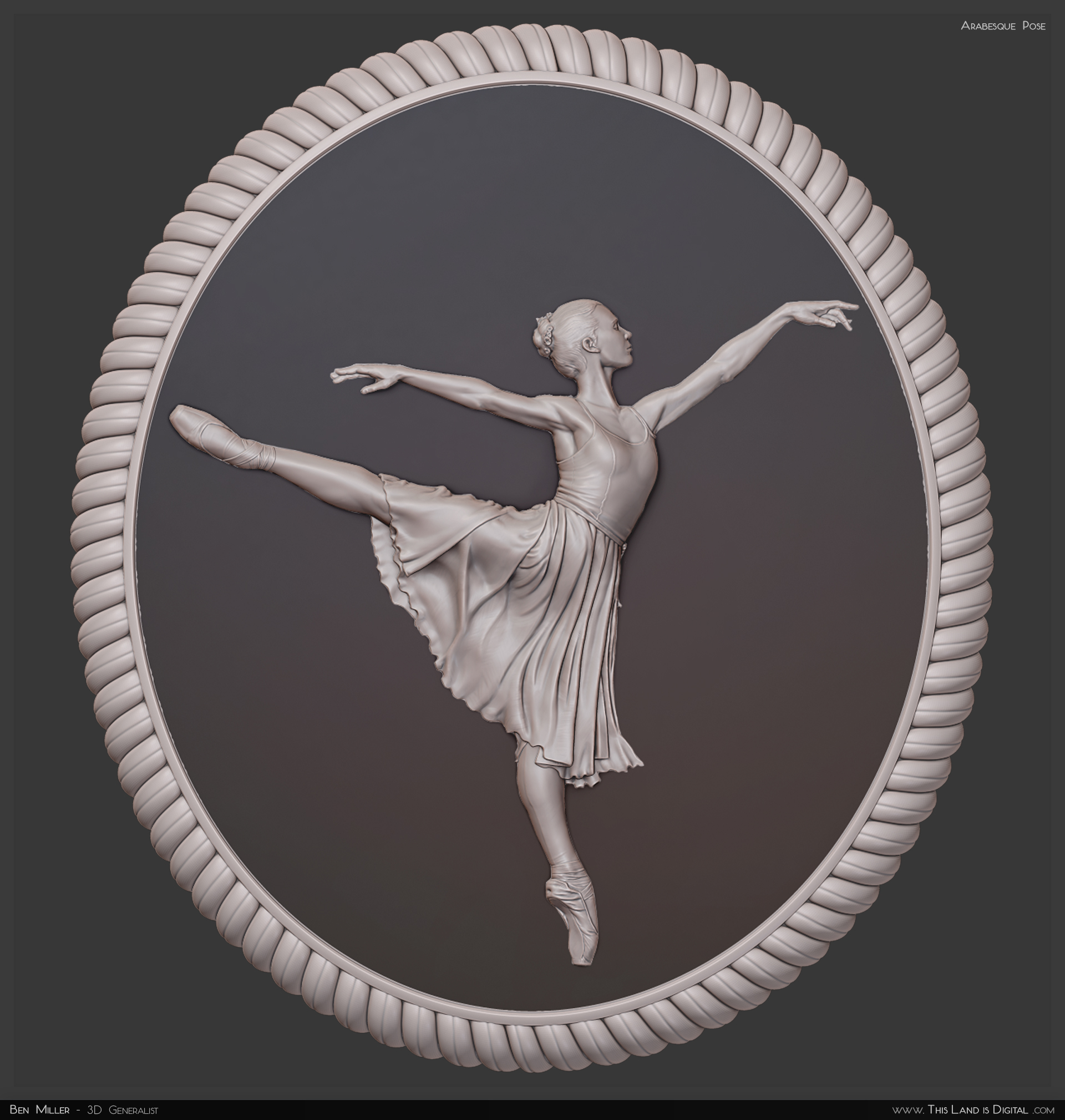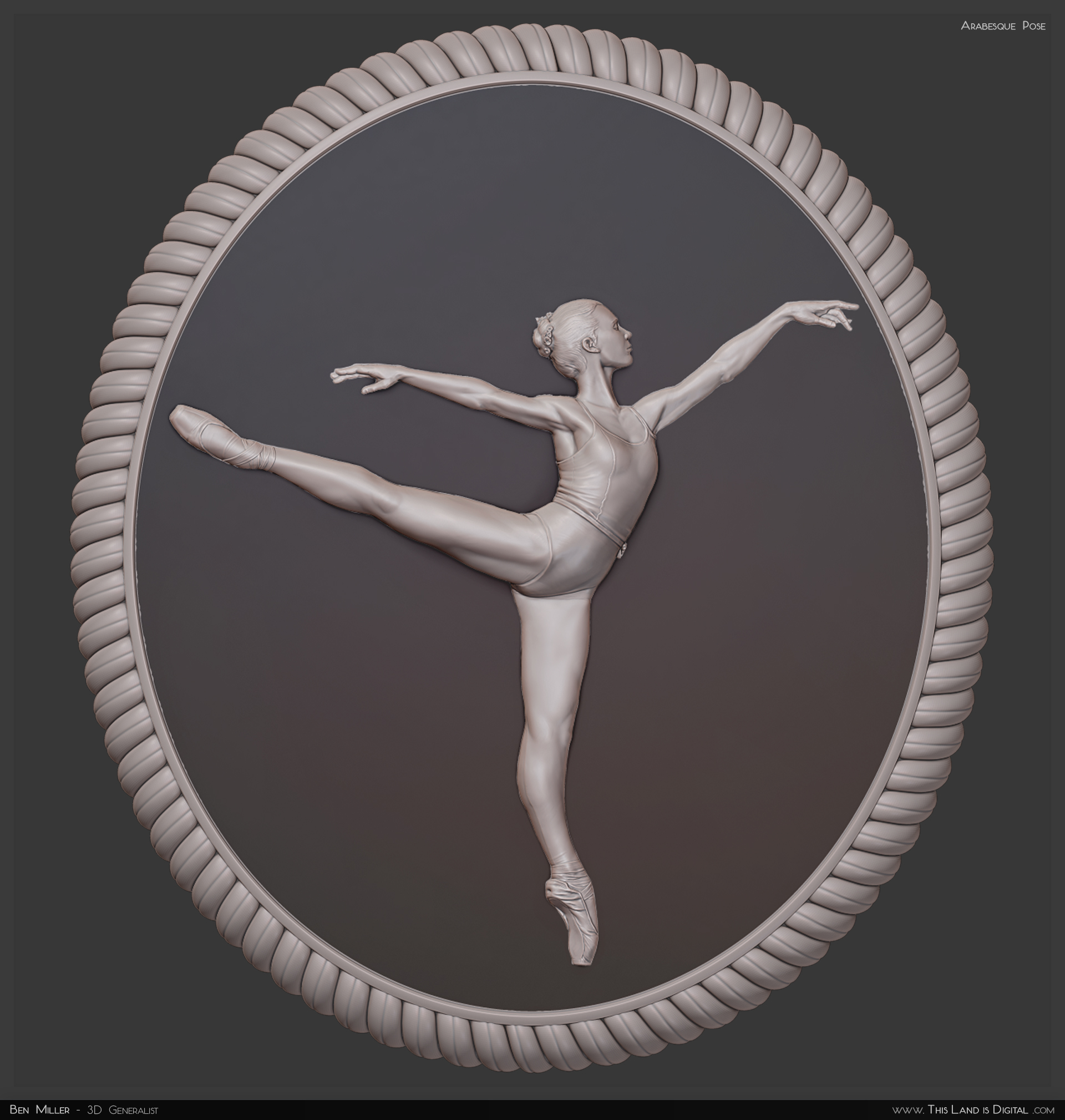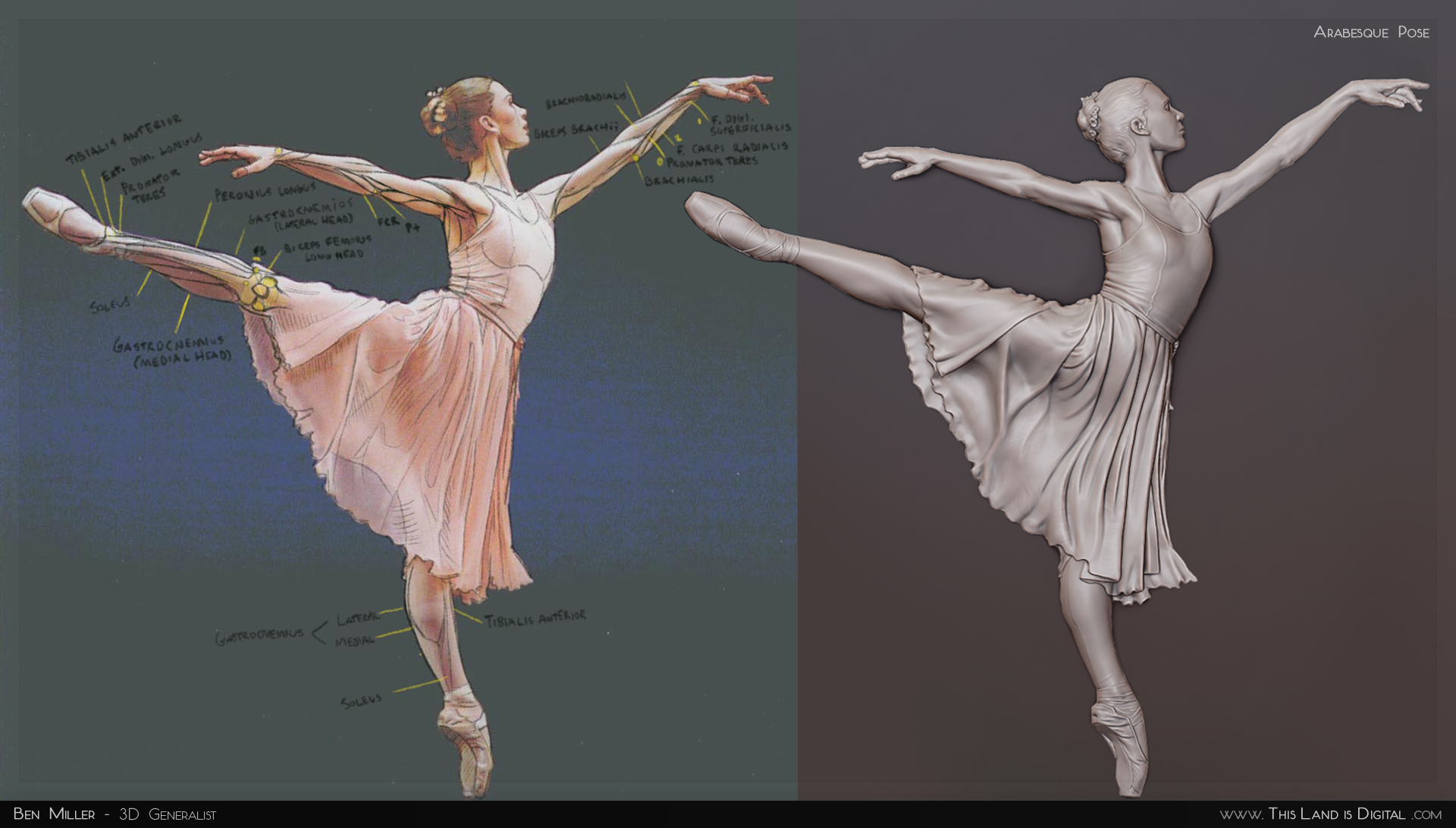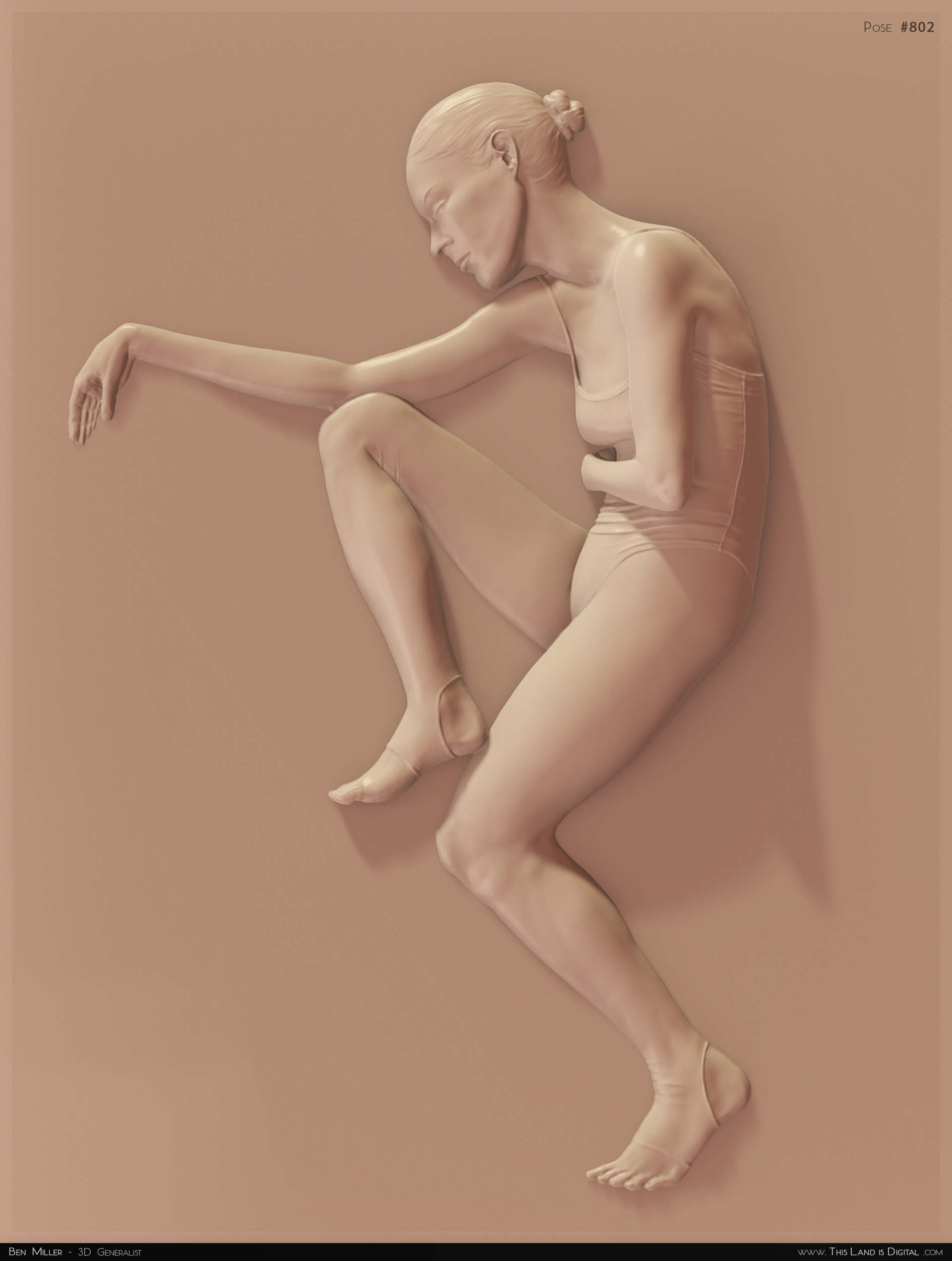Ballet and Figure Reliefs
Alongside the composers I was making for a client I occasionally tried other subjects. The results were of varying quality as I pursued them in part out of curiosity rather than work. I still attempted to abide by the limitations of 3D printing so that my client could use them should they be of interest.
The first ballet figure on this page I made specifically at the request of the client after successfully completing the second image on this page. I was given a screenshot of an ancient YouTube video featuring a woman in what I learned was an Arabesque pose. Once I’d found the pose, I was able to research the intended angles of the limbs, hips, shoulders, and head in relation to one another. Armed with this knowledge, I sketched some anatomical markers over the reference image and used them to accentuate the muscular forms that were otherwise hidden in the original reference.
The other relief was one taken out of a book I bought for myself awhile back featuring a thousand poses. I took it on as an experiment knowing that the forms were within my understanding, the subject was classically interesting, and the details were minimal.
Notes on Relief Sculpting
As mentioned above, if you’re working with an actual ballet pose, you can probably find information regarding the ideal form of the pose. Does the chest face the same direction as the hips? Does the torso stand straight or bend forward past the center? How high does the leg lift and is there twist to the ankle?
The Dress
(Arabesque) The dress proved easier to approach after I’d sculpted a body beneath it. This ensured that the masses formed by hips and thighs were present even after I began folding fabric over top of them. It also gave me a secondary mesh to use should my client prefer it.
Top Level Depth
Unlike in portraiture, when working with a full figure the most important forms are scattered through the entire body. The shoulders, hips, and head are all blocky, planar forms that give our eyes perspective on how the relief should be read. We see limbs as a series of three points that either run parallel to the plane or move closer or farther from us. In the Arabesque pose, I couldn’t add depth to the hand because it was important your eye see the shoulder, elbow, and wrist at the same depth. I couldn’t bring one forward without the others or the entire arm would appear to be bent towards us.
Hiding Depth with Seams and Bulges
The #802 relief presents a method to escape the aforementioned “top level depth”. The relief itself is much more compact, the figure more rolled together rather than stretched out. This meant that the forms I was emphasizing were rounder and more comparable to one another. The lifted leg, however, is on the far side of the entire pelvis yet bends around to meet the front leg again. This created a spiral of form extending all the way to the plate and back. A second point of contact on the arm further complicated things, forcing all three limbs to be in balance.
My solution was to emphasize alternative sources of depth while minimizing the literal depth. I created a deep pinched seam where the leg meets the body which casts darker shadows from soft, barely readable forms. The thigh itself is broad and soft so I tried to disguise as much false depth as possible behind it. That area has the depth equivalent of blurriness and, hopefully, your eye won’t sit on it long enough to notice.
Also playing into this illusion was the exaggeration of recognizable forms. Everyone knows instinctively what calves, ankles, and knees look like. I took advantage of this by raising those forms out to distract from the strangeness of the larger transitions.
Crucial Details
(Arabesque) The tape on the shoes and seams along both the torso and leg gave additional details and served as contours that the eye could follow. I made sure to give some wobble to the torso seam as it ripples over the folds in the fabric.
(#802) The way the folds wrap around the torso, crossing the entire depth spectrum, was very important to the final look of the piece. Those wrinkles are the best way for our eyes to read the shapes of those forms. Without them, we rely on the general curvature alone. Getting them right is difficult since they foreshorten and elongate from one side of the line to the other. The wrinkles are also the best way to distinguish between the rumpled texture of the fabric and the smoother surfaces of the skin.
Hands and Feet
The hands in each of these poses were very strange for me. I had very little depth to create them in because each limb was locked to its depth. Despite being important to the gesture of the pieces, there just wasn’t enough depth to reserve for the fingers. Instead, I focused on making one primary finger and a thumb using almost all of the remaining depth, then subtly etching the rest of the fingers as if in the flattest of reliefs.



